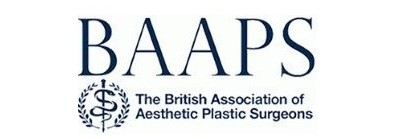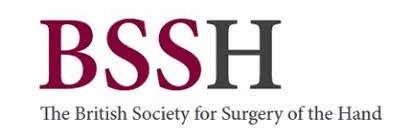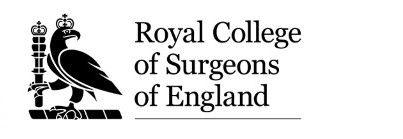Upper eyelid reduction
Blepharoplasty
- Upper eyelid reduction
- Blepharoplasty
- Brief overview of upper eyelid surgery
- The goal of the procedure
- Common reasons patients seek upper eyelid surgery
- Am I a Candidate for Upper Eyelid Surgery?
- Preparing for Upper Eyelid Surgery
- The Upper Eyelid Surgery Procedure
- Recovery and Aftercare
- Potential Risks and Complications
- Upper Eyelid Surgery Results
- Upper Eyelid Reduction – Before and After
Brief overview of upper eyelid surgery
Upper eyelid surgery, also known as upper lid blepharoplasty, is a cosmetic procedure designed to rejuvenate the appearance of the upper eyelids. As we age, the skin around our eyes loses elasticity, causing it to droop or sag, and in some cases, impairing vision. Upper eyelid surgery helps to address these concerns by removing excess skin from the upper eyelids, resulting in a refreshed, more youthful appearance. This procedure is popular among both men and women seeking to restore a more alert and revitalized look to their eyes.
The goal of the procedure
The primary goal of upper eyelid surgery, or upper lid blepharoplasty, is to rejuvenate and enhance the appearance of the upper eyelids by addressing the signs of aging. The specific objectives of the procedure include:
Removing excess skin: Over time, the skin loses elasticity, leading to sagging and drooping of the upper eyelids. The surgery removes this excess skin to create a smoother, more youthful contour.
Restoring a more alert and refreshed appearance: By addressing sagging and excess skin, the surgery helps to create a more awake and revitalized look, enhancing the overall appearance of the eyes and face.
Improving vision: In some cases, drooping upper eyelids can impair vision. Upper eyelid surgery can alleviate this issue by removing excess skin and lifting the eyelid, providing better visibility and overall function.
An improved appearance of the upper eyelids can lead to increased self-esteem and confidence in one’s appearance, enhancing overall quality of life.
It is important to note that the specific goals of upper eyelid surgery may vary depending on the individual’s unique needs and aesthetic desires, which will be discussed during the consultation with the plastic surgeon.
Common reasons patients seek upper eyelid surgery
There are several common reasons patients seek upper eyelid surgery, also known as upper lid blepharoplasty, including both cosmetic and functional concerns. Some of these reasons include:
Ageing: As we age, the skin loses elasticity and collagen, leading to sagging and drooping of the upper eyelids. This can cause a tired or aged appearance, prompting patients to seek upper eyelid surgery for rejuvenation.
Genetics: Some individuals are predisposed to developing excess skin or fat deposits in the upper eyelid area due to their genetic makeup, making them more likely to consider upper eyelid surgery for aesthetic improvement.
Impaired vision: In some cases, excess skin or sagging upper eyelids can obstruct the peripheral vision or create a hooded appearance over the eyes. Upper eyelid surgery can help improve vision by removing the excess skin and lifting the eyelid.
Asymmetry: Upper eyelid surgery can help to correct asymmetry between the two eyes caused by differences in skin laxity, fat distribution, or eyelid position.
Enhancing overall facial appearance: Patients who want to achieve a more balanced and harmonious facial appearance may choose to undergo upper eyelid surgery in conjunction with other facial rejuvenation procedures, such as a brow lift, facelift, or lower eyelid surgery.
Everybody’s motivation for seeking upper eyelid surgery is different, and it is essential to talk this through with your surgeon to determine the most appropriate approach to achieve your desired results.
Am I a Candidate for Upper Eyelid Surgery?
There are several general factors that may indicate you could be a good candidate for the procedure:
Age: Although there is no strict age requirement for upper eyelid surgery, most candidates are typically adults over the age of 45 who have begun to experience the effects of aging on their upper eyelids.
Healthy individuals: Good candidates for upper eyelid surgery should be in overall good health, without any serious medical conditions or illnesses that may increase the risk of complications during or after surgery.
Non-smokers: Smoking can negatively impact the healing process and increase the risk of complications. It is recommended that candidates for upper eyelid surgery are either non-smokers or are willing to stop smoking well in advance of the procedure.
Realistic expectations: Suitable candidates for upper eyelid surgery should have a clear understanding of the procedure, its risks and limitations, and maintain realistic expectations about the potential results.
Specific concerns: Ideal candidates for upper eyelid surgery are those who experience issues such as excess skin, sagging or drooping eyelids, puffiness or impaired vision due to the upper eyelid’s appearance.
It is important to note that suitability for upper eyelid surgery varies based on their unique needs, goals, and medical history. To determine whether you are a suitable candidate, it is essential to talk to your surgeon who can understand your concerns and discuss the most appropriate options for your specific situation.
Preparing for Upper Eyelid Surgery
Preparing for upper eyelid surgery, or upper lid blepharoplasty, involves several important steps to ensure the best possible outcome for the procedure. Here are some key aspects of the preparation process:
Initial consultation with your surgeon:
Discussing your goals and expectations: Clearly communicate your concerns and desired results with your surgeon to ensure you both have a mutual understanding of the procedure’s objectives.
Medical history and examination: Your surgeon will review your medical history, current medications, and any previous surgeries to assess your suitability for the procedure.
Answering questions and addressing concerns: The consultation is an excellent opportunity to ask questions and discuss any concerns you may have about the procedure, recovery, and potential risks.
Pre-operative instructions:
Medications to avoid: Your surgeon may ask you to stop taking certain medications prior to the surgery to minimize the risk of complications.
Smoking cessation: If you are a smoker, you will need to stop smoking several weeks before and after the surgery, as smoking can significantly impact the healing process and increase the risk of complications.
Hydration and nutrition: Maintain a healthy diet and stay well-hydrated before the surgery to promote optimal healing.
Arranging for post-operative care:
Assistance: Arrange for someone to drive you home after the surgery and assist you with daily activities for the first few days following the procedure.
Time off work: Plan to take at least one to two weeks off work or other daily responsibilities to allow yourself adequate time to rest and recover.
Post-operative supplies: You will be provided with a cool pack for your eyes to use after surgery and simple pain relieving medication.
Proper preparation for upper eyelid surgery is crucial to achieving the best results and ensuring a smooth recovery process. Be sure to follow your surgeon’s specific instructions and recommendations for your unique situation.
The Upper Eyelid Surgery Procedure
The surgical process for upper eyelid surgery, or upper lid blepharoplasty, typically involves several key steps. While the exact details may vary depending on the surgeon’s technique and the patient’s unique needs, the following provides a general overview of the procedure:
Anaesthesia: Prior to the surgery, you will be given anaesthesia to ensure your comfort during the procedure. This is usually a local anaesthetic which provides anaesthesia during the procedure and pain relief afterwards.
Incision: Your surgeon will carefully create an incision within the natural crease of your upper eyelid. This strategic placement ensures that any resulting scars will be well-concealed once healed.
Removal of excess tissue: The surgeon will remove excess skin from the upper eyelid to create a smoother, more youthful appearance. The extent of tissue removal will depend on your individual needs and the desired outcome.
Suturing: Once the desired contour is achieved, the surgeon will carefully close the incision with a continuous suture. This single pull-through suture is easily removed 1 week later.
Dressing: A protective dressing (steristrip) is applied to the incision site to promote healing and minimize the risk of infection.
Recovery room: After the surgery is complete, you will be taken to a recovery room where you will be closely monitored. A cool pack will be applied to your eyes and refreshed every 15 minutes. Once you are stable and alert, you will typically be allowed to go home the same day, with a friend or family member to assist you.
It is important to remember that the specific details of your upper eyelid surgery may vary based on your individual needs and your surgeon’s preferred techniques. Be sure to discuss the surgical process in detail with your plastic surgeon during your consultation to ensure you have a thorough understanding of what to expect.
Recovery and Aftercare
Recovery and aftercare are crucial aspects of the upper eyelid surgery (upper lid blepharoplasty) process, as they play a significant role in achieving the best possible results and minimizing potential complications. Here are some key points to consider during your recovery:
Immediate post-operative care:
You will likely experience some bruising, swelling, and discomfort after the surgery. Simple pain killers and cold compresses help manage these symptoms.
Keep your head elevated, even while sleeping, for the first few days to minimize swelling.
Avoid rubbing or touching your eyes, and follow your surgeon’s instructions for keeping the incision site clean and protected.
Follow-up appointments with your surgeon:
You will have follow-up appointments with your surgeon to monitor your healing progress and address any concerns or complications that may arise.
The sutures are typically removed approximately 1 week after the surgery.
Instructions for at-home care:
Manage pain and swelling with prescribed pain medication and cold compresses, as directed by your surgeon.
Gently clean the incision site as instructed, and apply any prescribed ointments or medications to promote healing and minimize the risk of infection
Follow activity restrictions provided by your surgeon, including avoiding strenuous activities, heavy lifting, and bending over for the initial recovery period, typically 2 to 3 weeks. Most people find avoiding bright sunlight helps and sunglasses comfortable to protect the eyes after surgery.
Expected timeline for recovery:
Most patients can resume normal daily activities within 7 to 10 days, but individual recovery timelines may vary.
Swelling and bruising generally subside within 1 to 2 weeks, though some residual swelling may persist for a few weeks.
Final results will become more apparent as swelling continues to decrease, usually within 2 to 3 months after the surgery.
Tips for a smooth recovery:
Follow your surgeon’s instructions and recommendations closely to ensure optimal healing.
Maintain a healthy lifestyle, including proper nutrition and hydration, to promote healing and overall well-being.
Be patient with your body and give yourself ample time to rest and recover.
Remember that each individual’s recovery experience may vary, so it is essential to follow your surgeon’s specific aftercare instructions and recommendations for your unique situation.
Potential Risks and Complications
As with any surgical procedure, upper eyelid surgery (upper lid blepharoplasty) carries some potential risks and complications. Although these risks are generally rare, it is essential to be aware of them and discuss them with your surgeon during your consultation. Some of the potential risks and complications associated with upper eyelid surgery include:
Infection: While rare, infection can occur at the incision site. Following your surgeon’s post-operative care instructions can help minimize this risk.
Bleeding: Excessive bleeding or the development of a haematoma (a collection of blood outside the blood vessels) can occur in rare cases. Follow your surgeon’s instructions regarding activity restrictions and avoiding certain medications to minimize this risk. Some bruising is normal after the procedure and may take 2-3 weeks to settle down.
Scarring: Although the incision for upper eyelid surgery is typically well-concealed within the natural eyelid crease, some degree of scarring is unavoidable. In rare cases, scarring may be more visible or cause discomfort.
Dry eyes or eye irritation: Temporary dryness or irritation of the eyes may occur after surgery. This can typically be managed with over-the-counter artificial tears or prescribed eye drops.
Asymmetry: In some cases, the two eyelids may heal differently, resulting in slight asymmetry. Additional surgical intervention may be necessary to correct this. It may be that asymmetry was present prior to the surgery.
It is a careful judgement as to how much skin to remove to avoid over-correction, which can lead to difficulty closing the eyes or under-correction, which may leave excess skin.
Changes in vision: Temporary changes in vision, such as blurriness or double vision, can occur after surgery but usually resolve on their own. In rare cases, vision changes may be more persistent or even permanent.
Anaesthesia risks: As with any procedure involving anaesthesia, there are potential risks associated with the administration of anaesthesia, including allergic reactions or complications related to underlying medical conditions. These are very rare with local anaesthetic.
Dissatisfaction with results: While most patients achieve their desired results, there is always the possibility of dissatisfaction with the final outcome. Maintaining realistic expectations and discussing your goals with your surgeon can help minimize this risk.
It is crucial to choose a qualified and experienced plastic surgeon to perform your upper eyelid surgery, as this can significantly reduce the risk of complications. Be sure to discuss any concerns you may have about the risks and complications with your surgeon during your consultation, and follow their pre- and post-operative instructions to ensure the best possible outcome.
Upper Eyelid Surgery Results
How long do the improvements last?
The longevity of the results from upper eyelid surgery (upper lid blepharoplasty) can vary depending on individual factors, such as the patient’s age, skin quality, and lifestyle choices. However, upper eyelid surgery generally provides long-lasting improvements to the appearance of the upper eyelids.
Duration of results: In most cases, the results of upper eyelid surgery can last for several years or more. Some patients may not require any additional surgery in their lifetime, while others may choose to undergo a revision procedure or additional facial rejuvenation treatments as they continue to age.
Age and skin quality: Patients who are younger and have better skin elasticity may experience longer-lasting results, as their skin is more resilient to the natural aging process. However, as the aging process continues, the skin may lose elasticity, and sagging or drooping can reoccur over time.
Lifestyle factors: Maintaining a healthy lifestyle can help extend the longevity of your upper eyelid surgery results. Avoiding excessive sun exposure, using sunscreen, not smoking, and maintaining a healthy diet and exercise regimen can all contribute to better overall skin quality and longer-lasting results.
Maintenance and additional treatments: Some patients may choose to undergo non-surgical treatments, such as injectables, chemical peels, or laser resurfacing, to help maintain and enhance the results of their upper eyelid surgery. These treatments can help address ongoing age-related changes and improve overall skin quality.
While upper eyelid surgery can provide long-lasting improvements, it is essential to remember that it does not stop the natural aging process. Maintaining realistic expectations and discussing your goals with your surgeon can help ensure your satisfaction with the results of your upper eyelid surgery.
Upper Eyelid Reduction – Before and After












